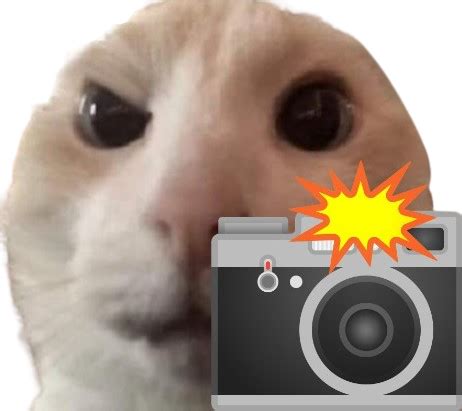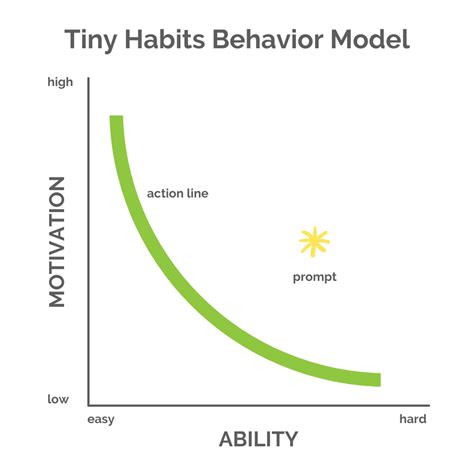
A viral video capturing four kittens engaged in what viewers are playfully calling a “synchronized screaming” session has taken the internet by storm, sparking amusement and speculation about feline communication. The footage, which shows the kittens vocalizing in apparent unison, has been widely shared and dubbed the “Kitten Coven,” igniting humorous comparisons to spellcasting and supernatural gatherings.
The video, initially posted on platforms like X (formerly Twitter) and Reddit, quickly garnered millions of views, with users captivated by the kittens’ coordinated vocalizations. Social media has been flooded with comments ranging from lighthearted jokes about feline rituals to more serious discussions about the possible reasons behind the kittens’ behavior. According to experts, the kittens’ synchronized behavior may be attributed to a combination of factors, including their shared environment, developmental stage, and inherent feline communication methods.
The Viral Sensation
The clip’s appeal lies in its unexpected nature. The internet is no stranger to cute animal videos, but the peculiar “screaming” and its seemingly synchronized nature set this particular video apart. The “Kitten Coven” moniker emerged organically from the online community, reflecting the playful interpretation of the kittens’ actions as something more mysterious than simple meowing.
“It’s just the sound all four of them making in unison that got to me,” one commenter wrote on Reddit, encapsulating the sentiment shared by many viewers.
The video’s virality can also be attributed to its shareability. The short, easily digestible format is perfect for social media platforms, and the humorous nature of the content encourages users to pass it along to their friends and followers.
Decoding Kitten Communication
While the “Kitten Coven” label is tongue-in-cheek, it raises legitimate questions about how kittens communicate. Feline communication is a complex interplay of vocalizations, body language, and scent marking. Kittens, in particular, rely heavily on vocalizations to communicate with their mothers and littermates.
Dr. Sarah Winslow, a feline behaviorist, explains, “Kittens use a variety of vocalizations to express their needs and emotions. Meows, purrs, hisses, and even screams are all part of their repertoire. The specific meaning of each vocalization can vary depending on the context and the individual kitten.”
In the case of the “Kitten Coven,” several factors could be contributing to the synchronized screaming. One possibility is that the kittens are experiencing a shared need or emotion, such as hunger, discomfort, or a desire for attention. When one kitten vocalizes, the others may instinctively join in, creating a chorus of sound.
Another factor could be the kittens’ developmental stage. Very young kittens are highly dependent on their mothers and littermates for survival. They may vocalize frequently to maintain contact and ensure their needs are met. As they grow older, they will gradually become more independent and their vocalizations will become more nuanced.
Potential Explanations for Synchronized Vocalization
Several theories attempt to explain the synchronous nature of the kittens’ vocalizations:
-
Learned Behavior: Kittens often mimic their mother’s and siblings’ behaviors. If one kitten initiates a vocalization, the others may learn to imitate it, leading to synchronized sounds.
-
Attention Seeking: Kittens, especially those separated from their mother or seeking food, may vocalize to attract attention. The synchronized screaming could be a collective attempt to gain the caregiver’s notice.
-
Emotional Contagion: Emotions can be contagious, even among animals. If one kitten is experiencing distress or excitement, the others may mirror that emotion and vocalize similarly.
-
Environmental Factors: External stimuli, such as a sudden noise or movement, could trigger a synchronized response. The kittens might be reacting to the same stimulus simultaneously.
-
Playful Interaction: The vocalizations might be part of a playful interaction between the kittens. They could be engaging in a form of rough-and-tumble play, with the screaming serving as a form of communication and excitement.
The Broader Context of Feline Behavior
Understanding the “Kitten Coven” phenomenon requires a broader understanding of feline behavior in general. Cats are often perceived as solitary creatures, but they are capable of forming strong social bonds, especially in kittenhood. Littermates often develop close relationships and engage in cooperative behaviors.
“Cats are more social than many people realize,” says Dr. Winslow. “They communicate with each other in a variety of ways, and they can form complex social hierarchies. In a multi-cat household, you’ll often see cats grooming each other, playing together, and even sleeping together.”
Furthermore, cats are highly adaptable creatures. They are able to thrive in a wide range of environments, from rural farms to urban apartments. Their behavior is influenced by a variety of factors, including their genetics, their early experiences, and their current environment.
Expert Opinions and Analysis
Veterinarians and animal behaviorists have weighed in on the “Kitten Coven” video, offering insights into the possible causes of the kittens’ synchronized vocalizations.
Dr. Emily Carter, a veterinarian specializing in feline medicine, notes, “While it’s difficult to say for sure without observing the kittens in person, it’s likely that their synchronized screaming is a combination of learned behavior and emotional contagion. Kittens learn a lot from their mothers and littermates, and they’re also highly sensitive to each other’s emotions.”
Dr. Carter also emphasizes the importance of providing kittens with a stimulating and enriching environment. “Kittens need plenty of opportunities to play, explore, and socialize. This will help them develop into well-adjusted and happy cats.”
Another expert, Dr. James Thompson, an animal behaviorist, suggests, “The synchronized vocalizations could also be a form of communication between the kittens. They may be signaling to each other that they’re hungry, uncomfortable, or simply want to play.”
Dr. Thompson adds that it’s important to observe the kittens’ body language as well as their vocalizations. “Are they relaxed and playful, or are they tense and anxious? This can provide clues about the meaning of their vocalizations.”
The Role of Social Media in Viral Phenomena
The “Kitten Coven” video exemplifies the power of social media to amplify and disseminate content. Platforms like X, Reddit, TikTok, and Instagram provide a fertile ground for viral phenomena to emerge. The ease with which content can be shared and the vast reach of these platforms mean that a video can go from obscurity to global sensation in a matter of hours.
Social media also plays a role in shaping the narrative surrounding viral phenomena. The “Kitten Coven” moniker, for example, was coined by social media users and quickly became the dominant way of referring to the video. This highlights the collective nature of online culture, where users actively participate in creating and interpreting content.
Moreover, social media provides a platform for experts to weigh in on viral phenomena. Veterinarians, animal behaviorists, and other experts can use social media to share their knowledge and insights with a wider audience. This can help to debunk myths and misconceptions, and to promote a more informed understanding of animal behavior.
The Ethical Considerations of Viral Animal Videos
While viral animal videos can be entertaining and educational, it’s important to consider the ethical implications of sharing and consuming such content. In some cases, viral animal videos may depict animals in distress or being mistreated. It’s important to be aware of the potential for exploitation and to avoid sharing videos that could promote animal cruelty.
Additionally, it’s important to remember that viral animal videos often present a distorted view of animal behavior. A short clip can’t capture the full complexity of an animal’s life. It’s important to seek out more comprehensive information about animal behavior from reliable sources.
The “Kitten Coven” video, while seemingly harmless, raises questions about the responsibility of viewers to consider the context in which the video was created. Are the kittens being properly cared for? Are they being subjected to any unnecessary stress? These are questions that viewers should consider before sharing or consuming viral animal videos.
Conclusion: A Lighthearted Moment with Deeper Implications
The “Kitten Coven” video is a lighthearted reminder of the power of the internet to connect people and to share moments of joy and amusement. However, it also provides an opportunity to reflect on the complexities of feline communication, the social dynamics of kittens, and the ethical considerations of sharing and consuming viral animal videos. While the kittens’ synchronized screaming may be nothing more than a quirky coincidence, it has sparked a broader conversation about the fascinating world of animal behavior and the role of social media in shaping our perceptions of it. The video’s unexpected virality underscores our enduring fascination with the animal kingdom and the human tendency to find humor and meaning in the most unexpected places. It also highlights the potential for even the simplest online content to spark broader discussions about animal welfare, behavior, and the influence of social media on public perception.
Frequently Asked Questions (FAQ)
-
What exactly is happening in the “Kitten Coven” video? The video shows four kittens appearing to vocalize in a synchronized manner, creating a sound that many viewers have described as “screaming.” This coordinated vocalization has led to the humorous comparison to a “coven” of spellcasting kittens. It’s important to note that “screaming” is an interpretation of the sound, and the kittens might be meowing loudly for attention, hunger, or other needs.
-
Is there any scientific explanation for why the kittens are “screaming” together? Several factors could be at play. Kittens often mimic each other, so if one starts vocalizing, the others might follow suit. They could also be experiencing a shared need, like hunger or discomfort, leading to a collective vocalization. Emotional contagion, where one kitten’s distress triggers a similar response in the others, is another possibility. Experts suggest that the behavior is likely a combination of learned behavior, shared environment, and communication.
-
Is this behavior normal for kittens? Yes, vocalization is a normal part of kitten behavior. Kittens use a variety of sounds to communicate with their mothers and littermates. While synchronized vocalization might not be typical, it’s not necessarily a cause for concern unless the kittens show other signs of distress, such as lethargy, loss of appetite, or changes in behavior. A veterinary consultation would be beneficial if owners are concerned.
-
Does the “Kitten Coven” video raise any ethical concerns? While the video itself doesn’t appear to show any overt mistreatment, it’s always important to consider the context in which animal videos are created. Viewers should be mindful of the potential for exploitation and avoid sharing videos that could promote animal cruelty. It’s also important to remember that a short clip doesn’t capture the full picture of an animal’s life, and we should seek out more comprehensive information about animal behavior from reliable sources. It’s always important to ensure the kittens are in a safe and caring environment.
-
How does this video reflect broader trends in online culture and our relationship with animals? The “Kitten Coven” video exemplifies the power of social media to amplify content and create shared experiences. It also highlights our enduring fascination with animals and our tendency to find humor and meaning in their behavior. The video’s virality suggests that people are drawn to content that is both cute and unexpected. It also provides a platform for experts to share their knowledge and insights about animal behavior, helping to promote a more informed understanding of the animal kingdom.
-
What breeds of kittens are most prone to vocalization? While breed plays a role, early experiences and environment tend to be more significant factors in determining a kitten’s propensity for vocalization. However, certain breeds, such as Siamese, Burmese, and Oriental Shorthairs, are generally known for being more vocal than others. These breeds are naturally more communicative and tend to express themselves through a variety of meows, chirps, and other sounds. The “Kitten Coven” video does not show any specific breeds of kittens.
-
At what age do kittens typically start to vocalize less? The frequency of vocalization often decreases as kittens mature into adult cats. Kittens are highly dependent on their mothers and littermates, and they use vocalizations to communicate their needs and maintain contact. As they become more independent, their vocalizations become more nuanced and less frequent. By the time they reach adulthood (around one year of age), most cats will have developed a more subtle and less frequent communication style. However, individual cats vary, and some will remain more vocal throughout their lives.
-
Are there any training techniques that can influence a kitten’s vocalization habits? While it’s difficult to completely change a cat’s natural inclination to vocalize, there are some training techniques that can help manage excessive vocalization. Positive reinforcement, such as rewarding quiet behavior with treats or praise, can be effective. It’s also important to address the underlying cause of the vocalization. For example, if a kitten is vocalizing due to hunger, providing regular meals can help reduce the behavior. Ignoring attention-seeking vocalizations can also discourage the behavior. However, it’s important to consult with a veterinarian or animal behaviorist for personalized advice.
-
How can I ensure a stimulating environment to meet all of a kitten’s needs? To ensure a stimulating environment for kittens, provide a variety of toys, scratching posts, and climbing structures. Interactive play sessions are essential for mental and physical stimulation. Offer opportunities for exploration and discovery, such as puzzle toys or hidden treats. A safe and comfortable resting place is also important. Social interaction with humans and other animals (if properly introduced) can also contribute to a stimulating environment.
-
Is there any veterinary research or behavioral studies dedicated to the phenomenon of group kitten vocalizations? The phenomenon of group kitten vocalizations hasn’t been extensively studied as a specific research topic. However, veterinary and animal behavior research covers related areas such as feline communication, kitten development, and social behavior in cats. Studies on feline vocalization patterns, the role of pheromones in communication, and the impact of early socialization on behavior can provide insights into the underlying mechanisms of group kitten vocalizations. Veterinary behaviorists often conduct observational studies to understand social dynamics in multi-cat households, which can shed light on the factors influencing vocalization patterns. More focused research in this area would be beneficial.









